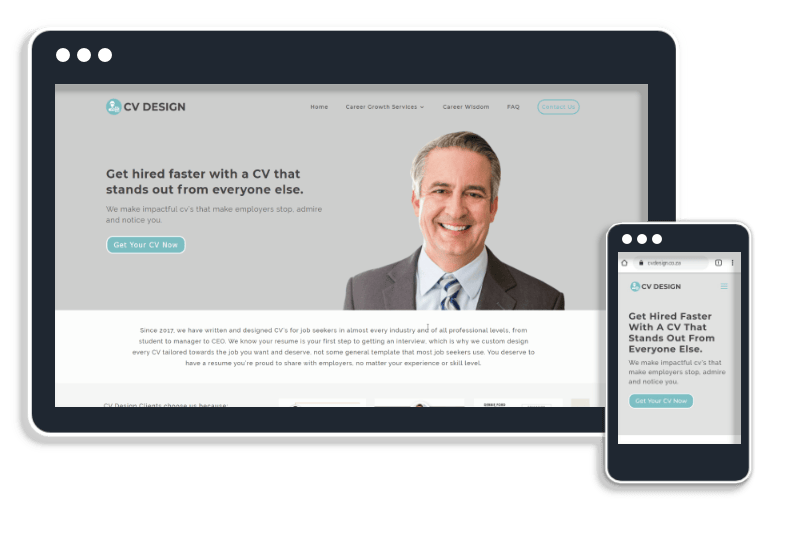Ideal Practices for Creating User-Friendly Website Design
In the ever-evolving landscape of website design, developing a straightforward user interface is vital for involving target markets and driving conversions. Key methods such as streamlining navigation, enhancing for mobile tools, and enhancing loading speed play an essential role in this process. Additionally, the relevance of consistent design elements and prioritizing access can not be overemphasized. As we discover these fundamental concepts, it comes to be clear that reliable customer experience layout not only fulfills customer assumptions yet additionally establishes the stage for much deeper engagement. Discovering the nuances of each practice can lead to substantial renovations in overall web effectiveness.
Simplify Navigating
A structured navigating system is necessary for improving user experience on any kind of web site. Efficient navigation permits customers to find the details they look for promptly and easily, thereby reducing frustration and raising the probability of engagement. A clear format that categorizes content practically is vital; individuals must without effort recognize where to click for certain information.
Using a basic top-level navigation bar, enhanced by drop-down menus for subcategories, help in preserving an arranged structure. It is essential to limit the variety of main navigation links to stay clear of frustrating customers; usually, five to 7 alternatives are optimal. In addition, employing descriptive tags improves quality, making it possible for users to recognize the content of each section at a look.
Including a search function even more improves the navigation experience, especially for content-rich internet sites. When looking for certain details, this feature empowers individuals to bypass typical navigating courses. Moreover, constant style components throughout all web pages reinforce familiarity, enabling individuals to browse with self-confidence.
Maximize for Mobile

Firstly, adopt a responsive style strategy that instantly adjusts the design and web content based upon the screen size. This adaptability makes sure that users have a consistent experience across devices. Next, prioritize touch-friendly user interfaces by guaranteeing switches and links are quickly clickable, reducing the need for zooming.
Furthermore, take into consideration the value of succinct content presentation. Mobile individuals often look for quick info, so using strategies like retractable food selections or accordions can enhance functionality without frustrating the individual. Additionally, make certain that font styles are understandable, and picture sizes are maximized for faster loading.
Lastly, examination your website on different mobile phones and running systems to identify prospective concerns. By attending to these components, you will develop an intuitive mobile experience that maintains customers engaged and encourages them to discover your offerings even more - Web Design Pretoria. Focusing on mobile optimization is vital for accomplishing an user-friendly website design in an increasingly mobile-centric globe
Enhance Loading Rate
Loading speed is a critical factor that can substantially influence user fulfillment and engagement on a website. Studies indicate that individuals anticipate web pages to pack in 2 secs or much less; yet threshold, the probability of desertion increases significantly. Therefore, maximizing packing rate is important for preserving visitors and improving overall site performance.
To improve loading rate, several finest practices must be executed. Furthermore, leverage web browser caching to store duplicates of files locally, making it possible for faster lots times for returning site visitors.
Use Constant Style Components
Developing a natural aesthetic identification is crucial for enhancing individual experience on a web site. Constant layout elements, including color systems, typography, buttons, and layout structures, create a unified look that helps users browse easily. When individuals come across acquainted patterns and designs, their cognitive tons is minimized, enabling them to concentrate on content as opposed to figuring out read this article varying design aspects.
Making use of a standardized color palette strengthens brand recognition and fosters a psychological link with customers. Maintaining constant typography-- such as font styles, sizes, and weights-- makes certain readability and contributes to a polished look. Furthermore, consistent switch designs and interactive elements lead individuals with ease through the website, improving usability.
Moreover, a cohesive design helps establish an arranged circulation of details, making it much easier for individuals to absorb and locate web content. Each web page must mirror the exact same layout concepts to avoid confusion and disorientation.
Prioritize Availability
A cohesive visual identification not just boosts navigating but likewise sets the stage for prioritizing ease of access in website design. Access makes sure that all individuals, including those with impairments, can navigate and engage with an internet site successfully. To accomplish this, internet developers have to comply with developed guidelines, such as the Internet Material Availability Guidelines (WCAG)
Carrying out functions like alt message for photos, key-board navigability, and ideal color comparison can considerably enhance the user experience for people with visual, auditory, or cognitive disabilities. It is crucial to use semantic HTML to structure web content rationally, enabling assistive technologies to convey and interpret details precisely to customers.
In addition, giving numerous methods of interaction-- such as text options for audio and visual material-- can provide to diverse user needs. Normal functionality testing with individuals who have impairments can uncover prospective barriers that might not be promptly obvious during the design phase.
Inevitably, prioritizing ease of access not just abides by legal standards yet also expands the possible audience, cultivates inclusivity, and enhances overall website use (Web Design Pretoria). By embedding accessibility right into the style procedure, designers can create a more fair electronic landscape for every a fantastic read person
Conclusion

As we check out these fundamental concepts, it ends up being clear that efficient individual experience layout not only fulfills customer assumptions but also sets the phase for deeper engagement. Mobile customers frequently look recommended you read for fast details, so using strategies like retractable food selections or accordions can boost usability without frustrating the user. When users run into acquainted patterns and styles, their cognitive lots is minimized, allowing them to focus on web content instead than understanding varying layout aspects.
In summary, applying finest methods for user-friendly web layout considerably enhances the overall customer experience. Sticking to these standards cultivates a favorable partnership in between individuals and digital platforms, eventually promoting individual satisfaction and retention.